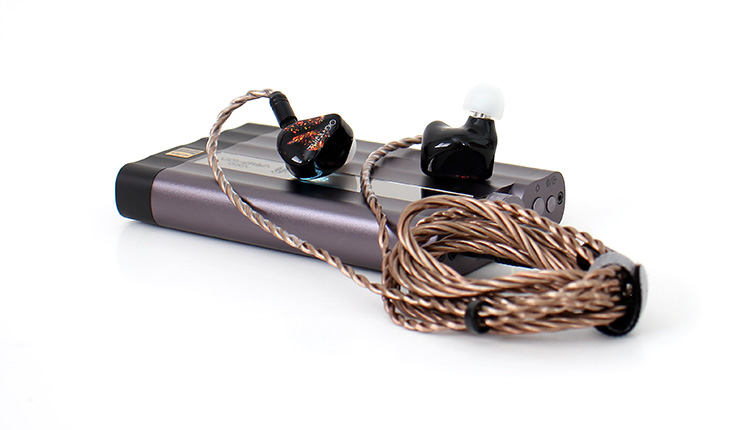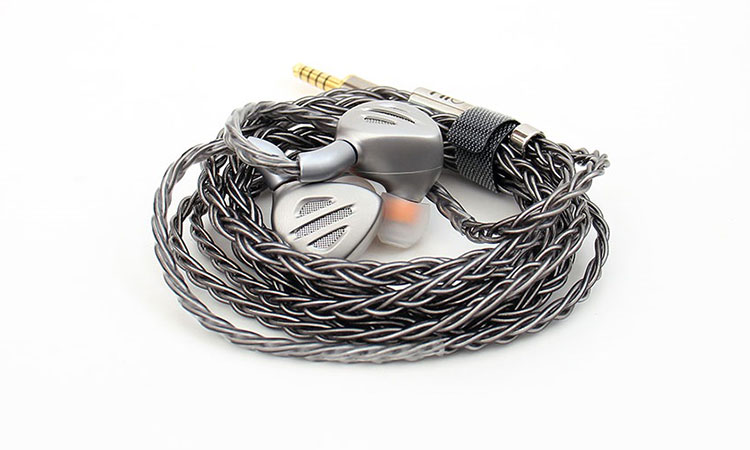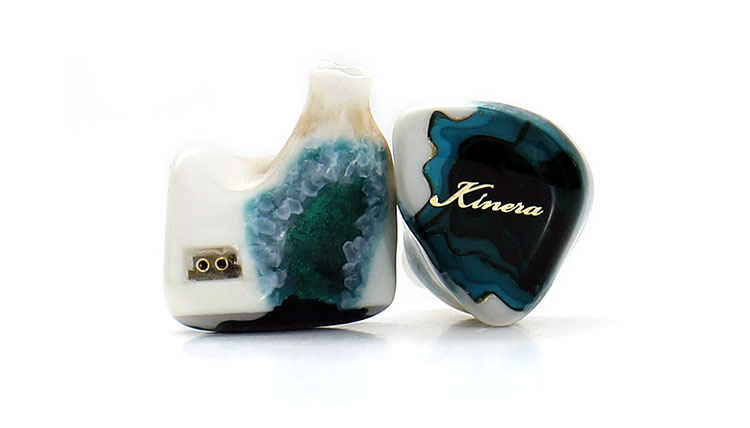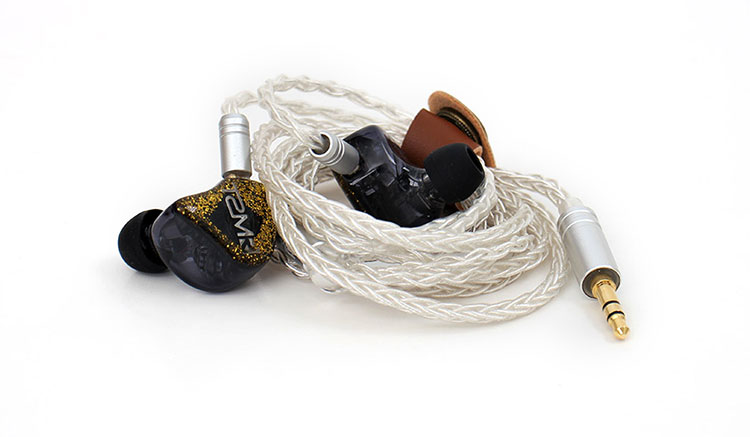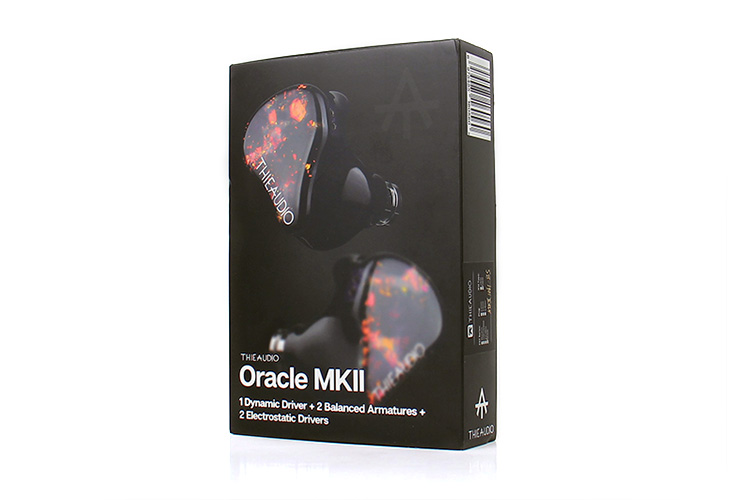Synergy
Efficiency
The THIEAUDIO Oracle MKII IEM carries an impedance specification of 11Ω and 110dB SPL @1kHz. The low number might sound like salvation and an inherent cure for inefficiency. Think again.
If you familiarize yourself with most hybrid IEMS over the last few years you’ll discover that when it comes to power output EST drivers tend to drag the overall sensitivity level down. Meaning volume levels tend to need to be a few steps higher than non-EST driver alternatives to get an appropriate listening level.
Another issue that might affect the overall sound quality and volume production could be output impedance sensitivity which might not pair well with an amplifier that has, for example, a high impedance rating on the output side.
Pairings
I never ran into an issue using dongle DACs, desktop amplifiers, or anything else in between. The Oracle MKII made an excellent companion paired with my iFi Audio xDSD Gryphon due to all the sound-altering features.
But the most fun was achieved by activating the Xbass. It bought forth the party animal within the Oracle MKII and increased the fun factor threefold.
It seems the trick of pairing the Oracle MKII successfully is to pair it with an amplifier that has a low impedance output section because the amount of power did not seem important and any amount will do.
Select Comparisons
FiiO FH9
Price $599.99
Technical
The FiiO FH9 is the top dog within FiiO’s IEM hybrid lineup and it relies on a total of seven drivers. It’s close to the top model we should say because one can debate for days which model is best, the FH9 or the Beryllium dynamic driver equipped FD7.
Some might argue that crossover networks can cause an issue in frequency transition while the single dynamic driver type doesn’t suffer from that issue inherently. Well if that was the golden rule here the FiiO FH9 would fall into suspicion in that aspect but it doesn’t seem to be an issue.
The FiiO FH9 driver array consists of a rather unconventionally large 13.6mm DLC dynamic bass driver reinforced by FiiO’s S turbo technology. The rest of the array consists of six Knowles drivers which were customized in collaboration with FiiO and Knowles.
FiiO implemented all the patented tricks they’ve acquired and implemented them inside the FH9 including a notch filter, Interchangeable sound filters along with a rear venting system that releases back pressure before it negatively enters the listener’s ear canal.
Design
These two IEMs are opposites, thesis, and antithesis. The FiiO FH9 is made from CNC-shaped titanium. The shells employ an open-back design but it doesn’t affect isolation performance. Perhaps the Oracle MKII is a nicer IEM to look at due to the FH9’s monotone silver-on-silver color scheme but the FH9 is certainly more robust.
The all-important stock cable has a similar configuration in which the tips are interchangeable plus FiiO includes the same 2.5mm, 3.5mm, and 4.4mm connectivity.
The IEM earbud connectivity once again is a thesis and antithesis concept. The FiiO FH9 uses the MMCX type of connector while the Oracle MKII uses a dual pin .78mm recessed connection with a B-type connection on the cable assembly.
One obvious observation is that FiiO includes a more ample amount of tips, 16 in total and more accessories overall on top of that. Plus my opinion is that the stock FiiO cable is nicer. It’s made with an 8-wire braid and assembled with polished metal hardware. It seems to produce less noise as well.
Performance
Both the FH9 and the Oracle MKII are party animal-friendly in the fact that their bass response can be pushed to ridiculously potent output levels. In stock form, the FiiO FH9 seems more midbass forward with a higher crystallinity level up on top.
That is a peculiar observation since the Oracle MKII sports those Sonion EST tweeters and one would assume a higher top-end reach but they tend to produce highs that seem more forward and present.
however, the crystallinity level is best produced on the FH9. Perhaps the more tolerable 18Ω rating is less prone to top-end ringing compared to a 11Ω rating IEM and it seems the FiiO FH9 is also more efficient and can reach louder volume levels with a smaller or a similar amount of power comparatively.
Kinera Imperial URD
Price $ 650.00
Technical
A similarly equipped IEM but in place of a DLC dynamic driver for bass production the Imperial URD uses an 8mm coaxial titanium crystal driver array which places two cones back to back in the same frame in what looks like a mini Isobaric design.
The URD also uses a set of Sonion tweeters but uses a four-driver array and possibly a four-way crossover network. It offers no user-friendly tuning capability which is offered by two of the four IEMs within this comparison.
Connectivity once again is identical and seems almost standard fare within this price bracket. The included set consists of a 2.5mm, a 3.5mm, and a 4.4mm connector but they come in the form of adapters which adds length to the stock plug. I prefer the swappable tip system implemented on the FH9 and Oracle MKII stock cable.
Design
Both the URD and the Oracle MKII are similarly constructed and made mostly from resins and seamlessly assemble and hand polished thereafter. However, their color schemes are opposites. The URD white shells display a hand-laid design that resembles the north wall from Game of Thrones.
Another similarity they have is their connectivity. Both these IEMs could share cables with no compatibility issues. They both use flush-mounted 2-pin connectors and connect to the stock cable via some B-type .78mm dual-pin connectors.
Performance
Perhaps you’re the type of listener that feels a powerful low-end rumble takes away your focus from the rest of the spectrum. Some find heavy bass tones to be fatiguing, then you might find the URD more in line with what you’re looking for.
The bass has less rumble and impact but extends very well nonetheless. The midrange detail is where the URD shines just as the Oracle MKII but seem similar up on the top end since they use similar tweeters.
With a more modest impedance rating perhaps the URD will not have similar inherent issues far as amplifiers with a high output impedance rating.
TANSIO Mirai Land
Price $599.00
Technical
I called the TANSIO Mirai Land cameleons because they can become different-sounding IEMs with a flick of a switch. The shells have three DIP switches that raise or lower each of the 3-way driver array output levels. There’s one for the bass, one for the midrange, and one for the treble.
The driver array consists of a 10mm dynamic driver along with a BA array that includes some Sonion EST tweeters and a total driver count of six drivers tied to a 4-way crossover section. The midrange section is produced by some Knowles BA drivers.
Design
The front plate is bright and shimmers with gold flakes but the shell where all those drivers reside seems almost transparent with a slight smoke effect. Some will love them or hate their look because of the bling factor. I think they’re a handsome set.
Again, they use a similar 0.78mm flush-mounted connector and I can also confirm that this cable assembly is cross-compatible with the Oracle mk2 cable.
Accessories inclusion, although not the best of the bunch still beats out the Oracle MKII overall package. TANSIO includes the same 6 sets of tips but also includes a cleaning brush and a jig to flip those DIP switches.
The stock cable assembly is a nice one but it lacks the connectivity of the other three IEMs within this comparison which is a con and the box set only comes with 3.5mm single-ended connectivity.
Performance
The TANSIO Mirai Land is the most polite set of the bunch and attempts to remain naturally toned, composed, and gentle on the senses but can also become intense with the switches in the upper position.
Now, they do produce a couple of peaks and one is around the same 7kHz area as the Oracle MKII but the intensity levels of these peaks are not as intense.
If you raise the treble switch you might find the high-frequency output too forward and the same thing could happen with the midrange switch but not so much with the bass switch which I preferred in the high position due to the somewhat shy bass response in stock form.
The beauty of this IEM is the ability to flip those switches and change the overall sound tuning. None of the other IEMs except for the FH9 offer sound-altering features. Most will be content using a good equalizer and might also worry that the switches in the future can become corroded and become intermittent. Only time will tell, however.
Our Verdict
The THIEAUDIO Oracle MKII is a fun IEM to listen to. It’s naturally toned, detail-oriented, and centric with a hidden party animal capability due to its bass-boosting tolerance and capability.
To be honest I thought going into this IEM that the high frequencies were gonna hero this set and I found that the amount of detail produced by this set in the midrange section was the high point along with its good staging capability.
If we were to complain about something that would be the lack of ear tips along with the rather intense 7kHz perceivable peak that some might find too intense and too forward.
On the other hand, the Oracle MKII is a generally good IEM due to its generally appealing sound signature that’s not genre-specific nor source-sensitive, and performs well with most modern-day gear. It’s an IEM that will appeal to the audiophile and party animal alike.
THIEAUDIO Oracle MKII Technical Specifications
- Drivers: 10mm + Sonion and Knowles BA + Sonion EST
- Impedance: 11 Ω
- Sensitivity: 100db @1kHz
- Cable: 26awg 5n OCC silver plated Litz cable
- Plug type: Modular 2.5mm, 3.5mm, 4.4mm
- Cable length: 1.2 meters


